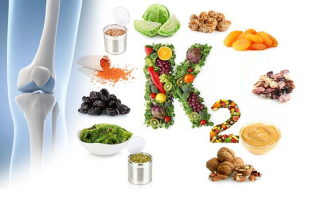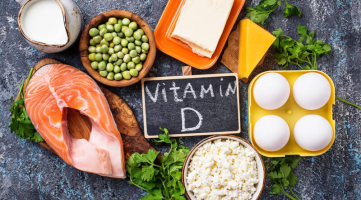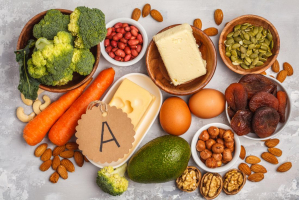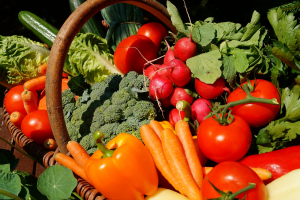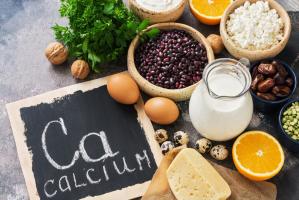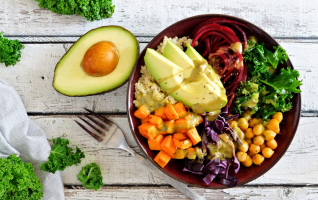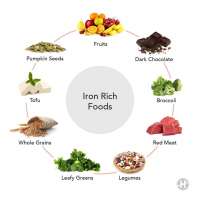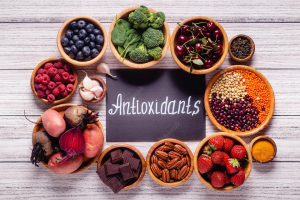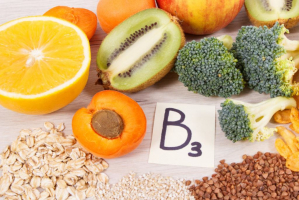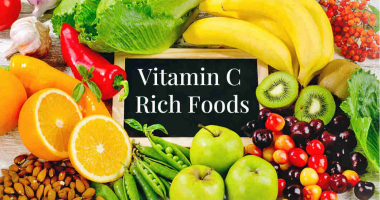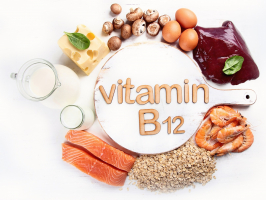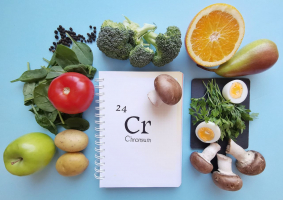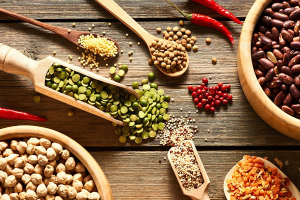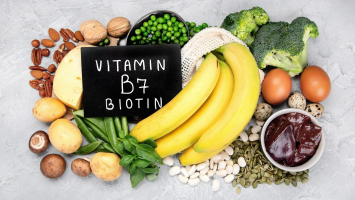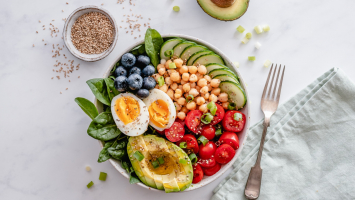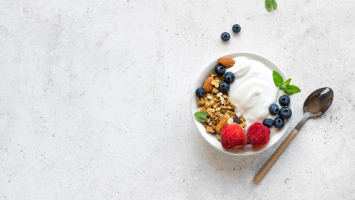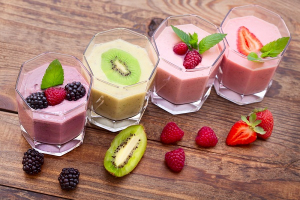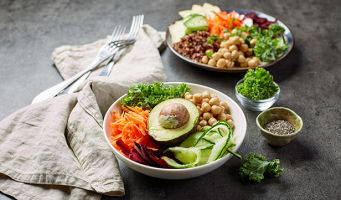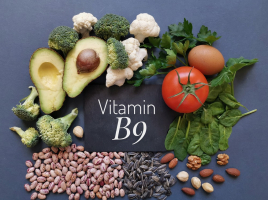Top 10 Best Foods High in Vitamin K1
Vitamin K is a nutrient that is required for good health. It aids in the development and maintenance of strong bones. The vitamin's most well-known function is ... read more...in assisting blood clotting, sometimes known as "coagulation". In reality, the letter "K" is derived from the German word Coagulation, which means "blood-clotting". Vitamin K1, also called phylloquinone, is primarily found in plant-based diets like green leafy vegetables. Vitamin K1 accounts for roughly 75% to 90% of total vitamin K in the human body. So, Let's with Toplist make a list of the best food high in Vitamin K1!
-
Kale, sometimes known as leaf cabbage, is a type of cabbage that is grown for its edible leaves, while certain cultivars are also used as ornamentals. Kale leaves are green or purple in color, and the core leaves do not form a head. Most farmed Brassica oleracea types are thought to be closer to wild cabbage than kale. Kale is thought to have originated in the eastern Mediterranean and Anatolia, where it was first planted for sustenance around 2000 BCE.
Kale is a green vegetable that has numerous health benefits, including lowering cholesterol, decreasing cancer-causing factors, and being high in Vitamin K and Vitamin A. Approximately 681 percent of the daily value is provided by 100g of cooked kale. Eat kale with some high-fat or high-oil dishes to get the maximum vitamin K1 out of it. Because vitamin K is fat-soluble, it can be absorbed more effectively when coupled with fat.
Vitamin K aids in blood clotting by allowing your body to produce proteins that aid in the process. Clotting is necessary because it keeps your body from bleeding excessively. Kale is the king of vitamin K. It is classified as a superfood. It's no surprise, given its high calcium, potassium, and folate content, as well as other vitamins and minerals.
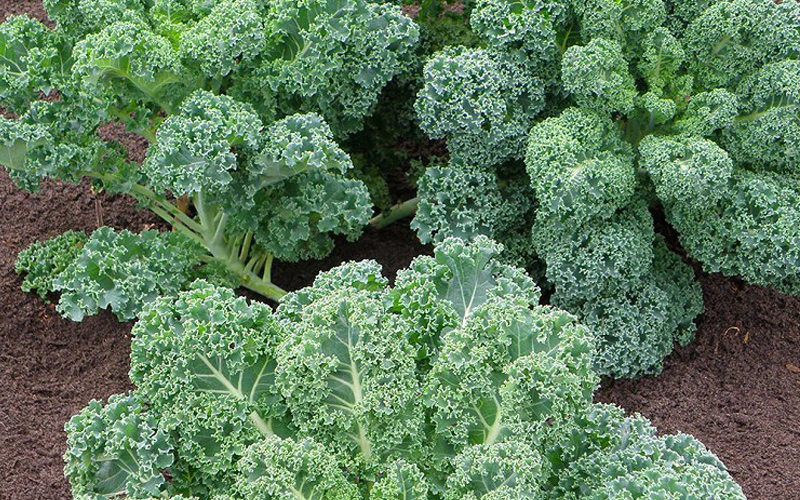
Kale 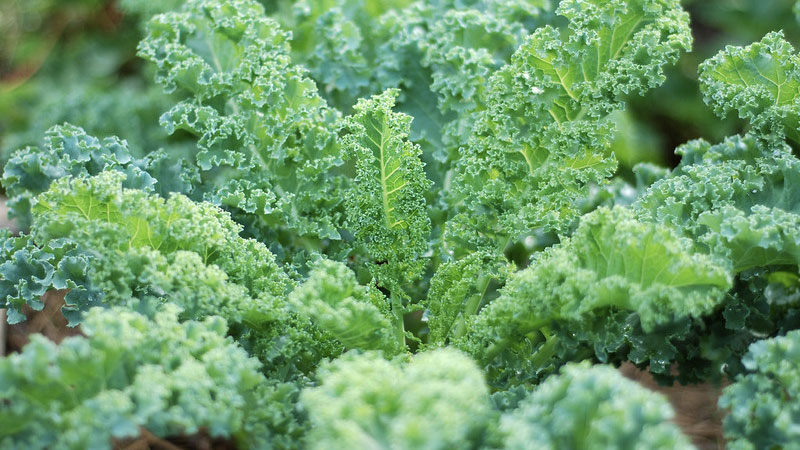
Kale -
Collards are a vegetable with large green leaves and tough stems that must be removed before eating. Collard greens are the leafy sections of the cabbage that everyone consumes. They're related to cabbage, kale, and mustard greens and are prepared similarly. Greens originated in Greece, but America didn't get its first taste of the dark green, leafy vegetable until the early 1600s, when the first Africans arrived in Jamestown, Virginia.
Cabbage and kale are both green leafy vegetables that are high in antioxidants, vitamins, and minerals that are beneficial to the body. In fact, one cup (100 grams) of cooked collard greens contains roughly 407 mcg of vitamin K1 or 339 percent of the daily value. Cabbage is a low-calorie, nutrient-dense, and healthful food.
Vitamin K aids bone formation in addition to its involvement in clotting. In a few types of research, low vitamin K intake has also been connected to the development of osteoporosis, which causes weak bones that are easily broken, according to Trusted Source. Try this vegetarian collard greens dish for a healthy dosage.
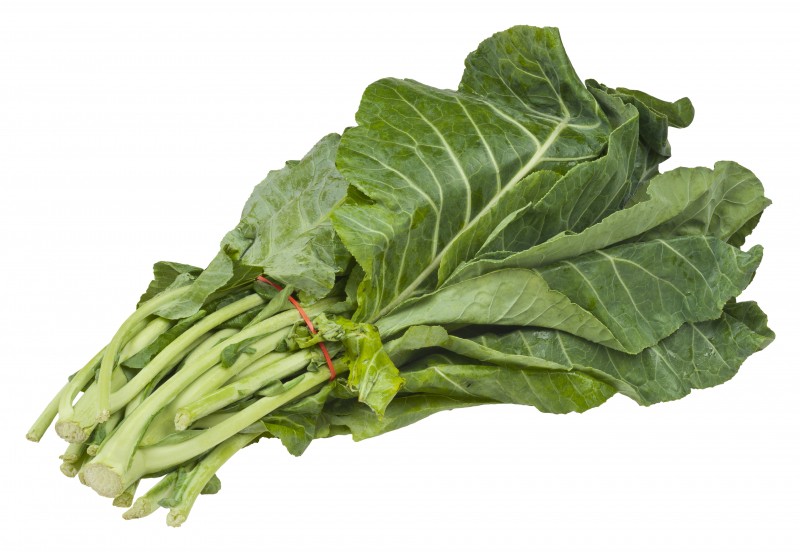
Collard greens 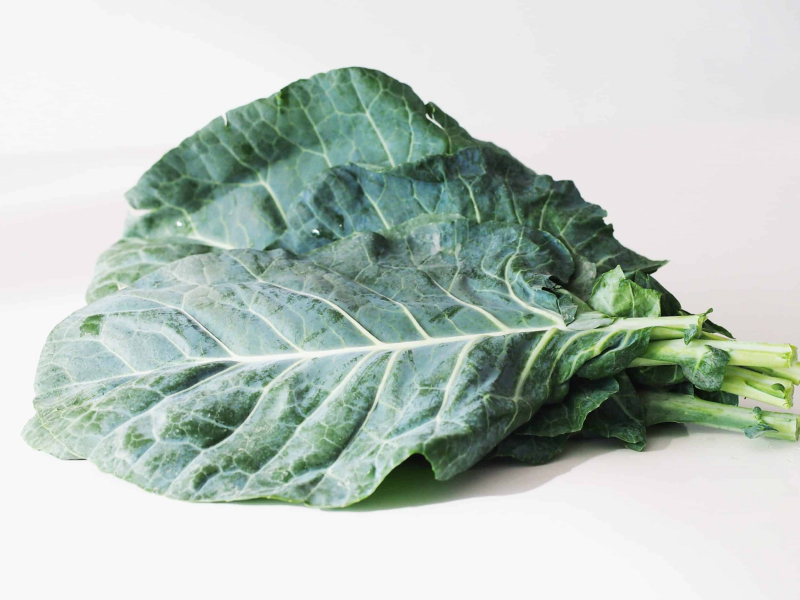
Collard greens -
Spinach (Spinacia oleracea) is a blooming plant with a leafy green color that is native to Central and Western Asia. It is a part of the Caryophyllales order, the Amaranthaceae family, and the Chenopodioideae subfamily. Its leaves are a typical edible vegetable that can be eaten fresh or after being preserved via canning, freezing, or drying procedures. It can be eaten cooked or raw, and the taste is somewhat different; steaming can help to lessen the high oxalate level.
Each 100g serving of raw spinach contains 483 mcg of vitamin K1 or 402 percent of the daily value (DV) for the body. A half-cup of cooked spinach has around three times the vitamin K content of a cup of raw spinach, yet one raw serving is still enough for one day. As a result, those taking the anticoagulant warfarin (which works by suppressing vitamin K) are advised to limit their consumption of spinach (and other dark green leafy vegetables) to avoid warfarin's impact being blunted.
Vitamins, minerals, and antioxidants abound in spinach. Spinach is high in iron, vitamin C, and vitamin A, all of which aid the body to become more resistant. Vitamin K and calcium are also present, which are beneficial to the bones and teeth. This vegetable is also high in omega 3, which is beneficial to the nervous system.
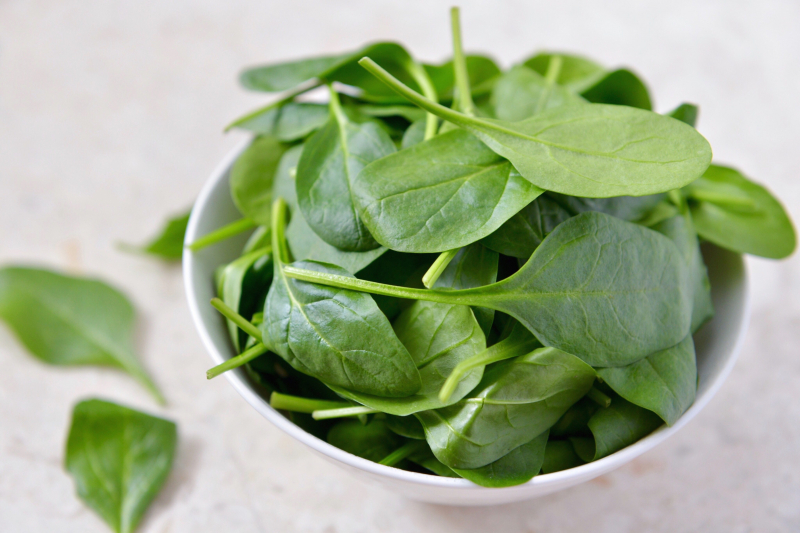
Spinach 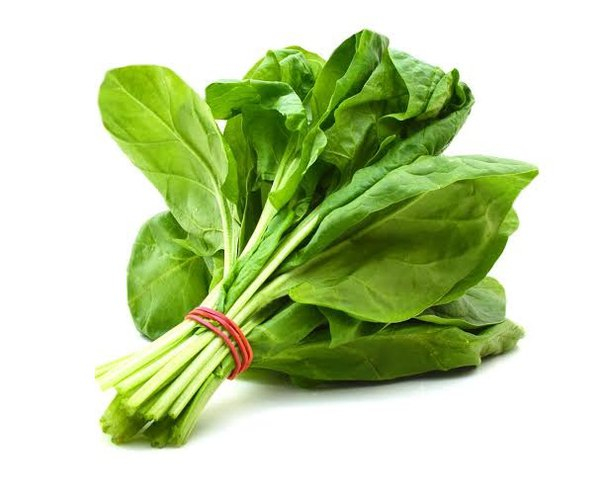
Spinach -
Brussels sprouts are a cruciferous (family Brassicaceae; ancient name Cruciferae) cultivar group that includes broccoli, cabbage, collard greens, kale, and kohlrabi. They are produced for their edible buds and belong to the same species as broccoli, cabbage, collard greens, kale, and kohlrabi. The leaf veggies have a diameter of 1.5–4.0 cm (0.6–1.6 in) and look like little cabbages. Although Brussels sprouts are native to the Mediterranean region, they first came to northern Europe in the 5th century and were first farmed in the 13th century near Brussels, Belgium, whence they got their name.
Vitamin K is abundant in Brussels sprouts. This critical nutrient is essential to your body's functioning. Coagulation, or the development of blood clots that stop bleeding, requires it. Vitamin K may also aid bone formation and protect against osteoporosis, a disease that causes progressive bone loss. It's especially vital to keep a steady vitamin K intake if you're on blood-thinning medication. As a result, foods high in vitamin K, such as Brussels sprouts, may need to be consumed with caution. However, for most people who aren't taking this kind of medication, increasing vitamin K intake can have a variety of health benefits.
The vitamin and mineral content of Brussels sprouts is high. 100 grams of cooked tiny cabbage typically contains 140 mcg of vitamin K1 or about 117 percent of the daily value. Furthermore, they provide high levels (20% or more of the Daily Value, DV) of vitamin C (102 percent DV) in a 100-gram reference amount, with more moderate amounts of B vitamins like folate and vitamin B6 (USDA nutrient table, above right); essential minerals and dietary fiber are present in moderate to low amounts.
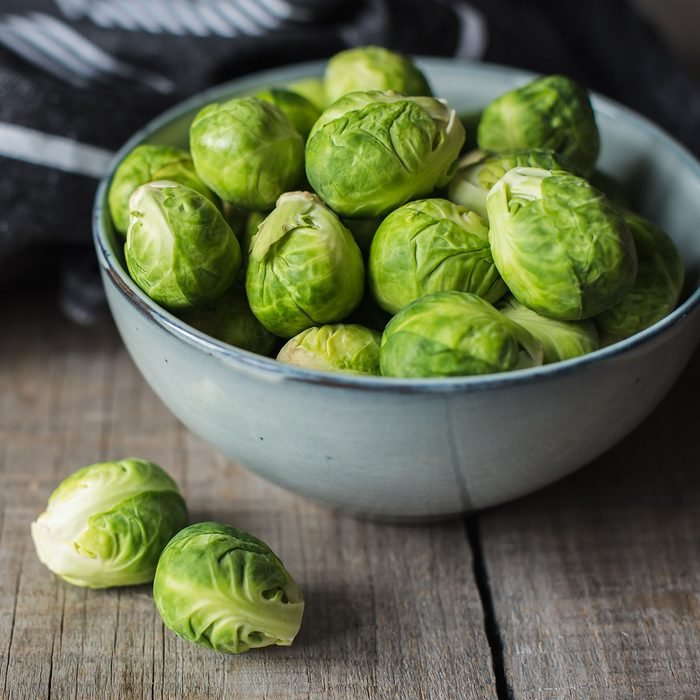
Brussels sprouts 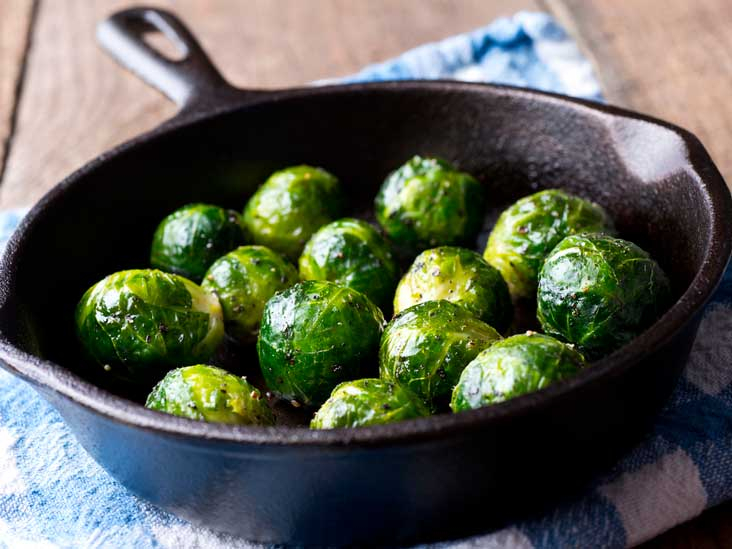
Brussels sprouts -
Broccoli is a vegetable that has a cabbage-like green plant with a large flowering head, stalk, and little leaves. Broccoli belongs to the Italica cultivar group of the Brassica oleracea species. Broccoli has large, dark green flower heads that are arranged in a tree-like structure branching out from a thick, light green stalk. The pile of flower heads is surrounded by a ring of leaves. Broccoli was created by crossing landrace Brassica crops in the northern Mediterranean in the sixth century BCE. Broccoli originated in Roman Empire basic cultivars and was most likely improved by artificial selection in the southern Italian Peninsula or Sicily.
Vitamins, minerals, and antioxidants abound in broccoli. Broccoli can be cooked in a number of different ways. Try cooking with canola or olive oil in whatever recipe you're making, not just to enhance flavor but also to boost the vitamin K level. About 10 mcg of vitamin K is included in a spoonful of each. 100 grams of cooked broccoli contains 141 mcg of phylloquinone or roughly 118 percent of the daily value.
Broccoli includes several natural compounds that scientists are still learning about, in addition to all of the vitamins and minerals it contains. Sulforaphane, a sulfur molecule, is the most prominent of these, and it may aid in the treatment of diseases such as diabetes and cancer. As a result, it can aid in the prevention of a variety of ailments, providing numerous health benefits.
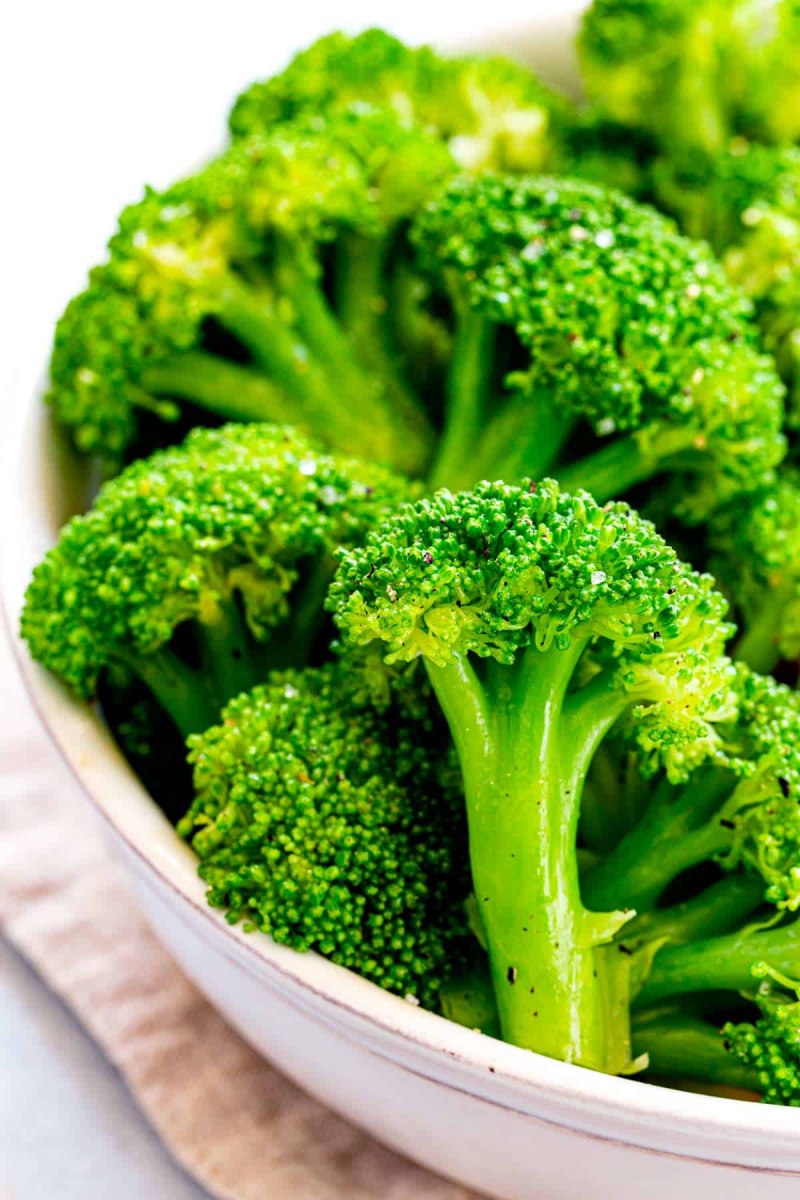
Broccoli 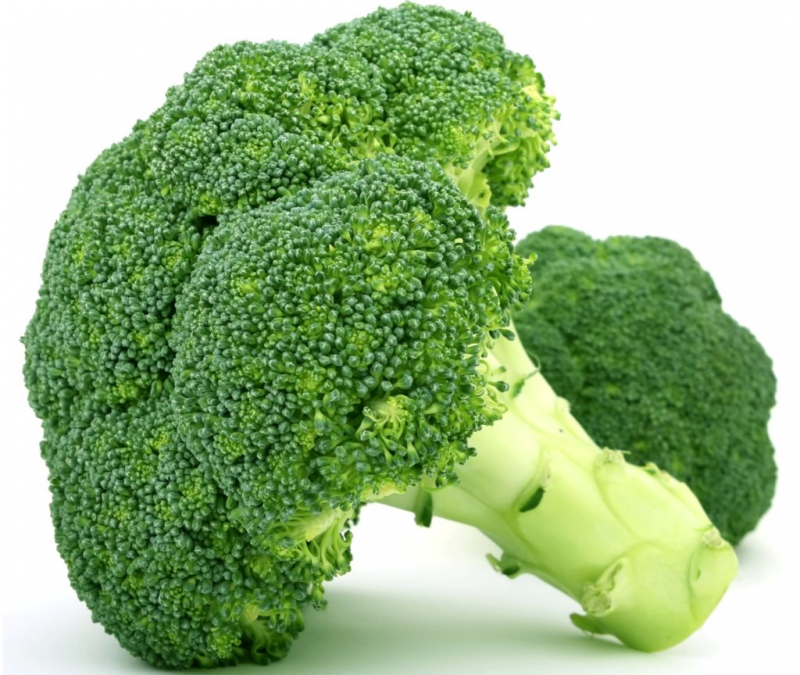
Broccoli -
Asparagus, often known as garden asparagus or sparrow grass, is a species of perennial flowering plant in the genus Asparagus. Asparagus Officinalis is its scientific name. In the spring, its young shoots are consumed as a vegetable. It was once thought to be a member of the lily family, along with the Allium species that include onions and garlic. Genetic research, however, splits lilies, allium, and asparagus into three families: Liliaceae, Amaryllidaceae, and Asparagaceae, with the Amaryllidaceae and Asparagaceae, classified together in the order Asparagales. According to several accounts, Asparagus officinalis's natural area encompasses most of Europe and western temperate Asia. It is frequently farmed as a vegetable crop.
About 40 mcg of vitamin K is found in four spears of asparagus. With the addition of a little olive oil, you've reached nearly half of the recommended daily intake. Keep in mind that eating a lot of vitamin K-rich foods in one sitting won't help you for long. Vitamin K is not well absorbed by the body, and it is quickly flushed out.
When eaten as part of a fiber-rich diet, asparagus is an excellent way to achieve your fiber requirements while also keeping your digestive system healthy. Summary Asparagus is a high-fiber food that supports regularity and digestive health, as well as lowers the risk of heart disease, high blood pressure, and diabetes.
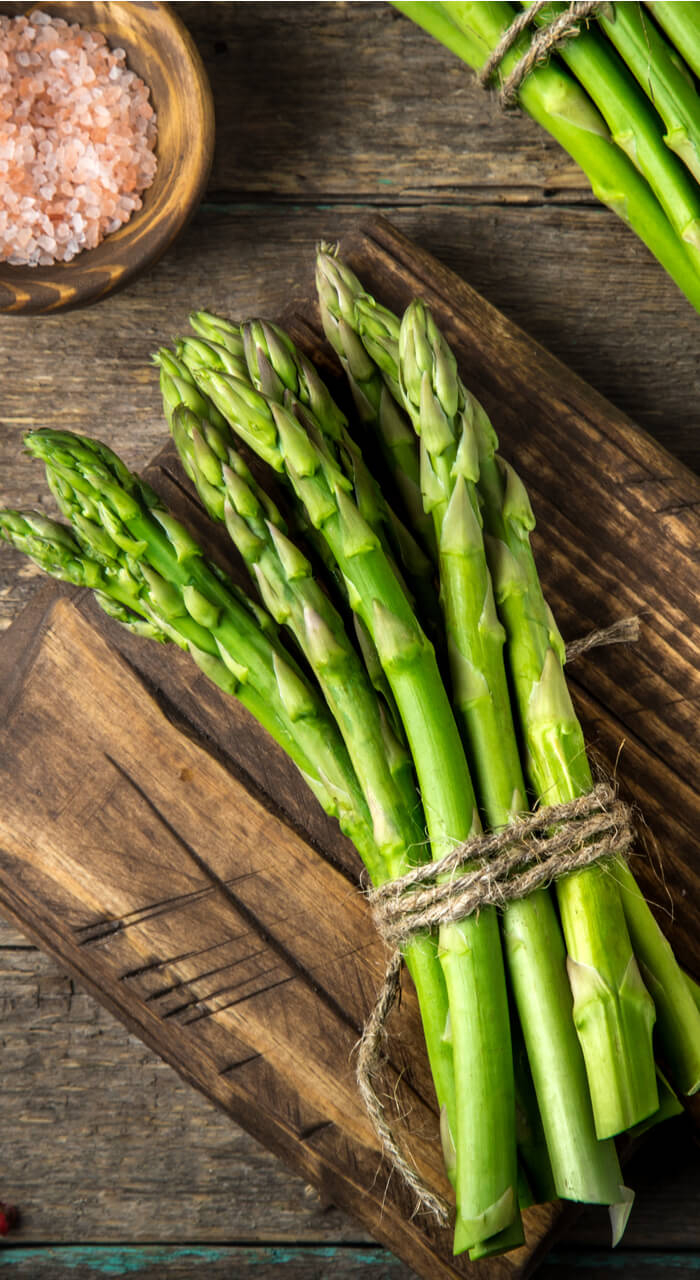
Asparagus 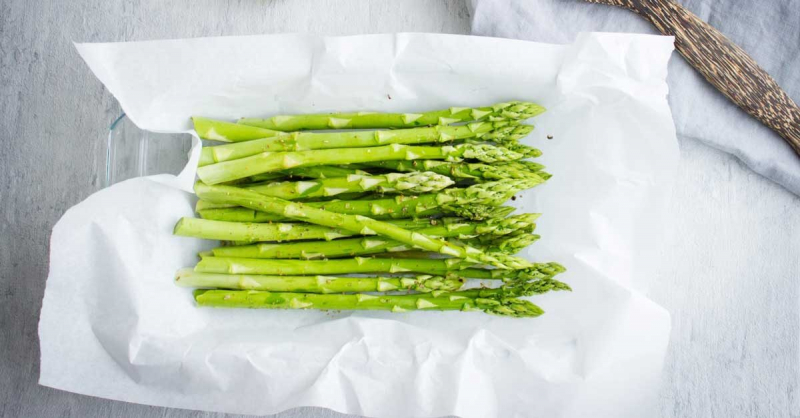
Asparagus -
Lettuce (Lactuca sativa) is an Asteraceae family annual plant. It is commonly grown as a leaf vegetable, but its stem and seeds are also harvested. Lettuce is most commonly associated with salads, although it can also be found in soups, sandwiches, and wraps; it can also be grilled. The ancient Egyptians were the first to cultivate lettuce, transforming it from a plant whose seeds were used to extract oil into a lucrative food crop produced for its succulent leaves and oil-rich seeds. The Greeks and Romans both ate lettuce, and the Romans gave it the name Lactuca, from whence the English lettuce is derived.
Lettuce is most probably the most common vitamin K source in American diets. Vitamin K can also help you avoid bone fractures if you get enough of it. Lettuce is a great source of vitamin K (97 percent DV) and vitamin A (21 percent DV), with darker green lettuces, such as romaine, having higher quantities of the provitamin A complex beta-carotene. With the exception of iceberg lettuce, lettuce is a good source of folate and iron (10–19 percent DV). Iceberg, romaine, green leaf, and bibb lettuce are among the varieties offered at salad bars and grocery stores across the country.

Lettuce 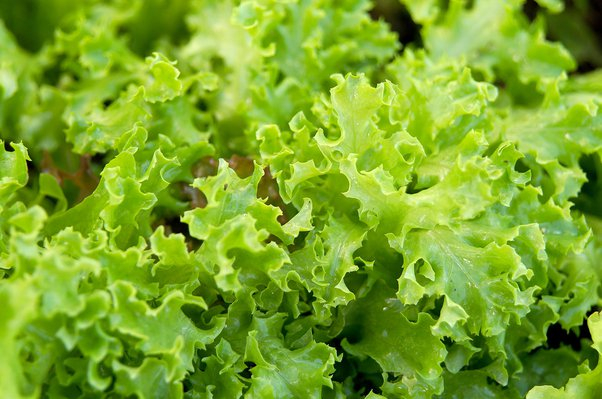
Lettuce -
Wasabi, often known as Japanese horseradish, is a plant in the Brassicaceae family, which also includes horseradish and mustard. A fragrant condiment prepared from its ground rhizomes is used on sushi and other meals. It has a flavor that is more akin to hot mustard or horseradish than chili peppers, and it excites the nose rather than the tongue. The majority of wasabi flavorings, on the other hand, are ersatz, consisting of horseradish plus food coloring. In Japan, the plant grows wild along stream beds in Himalayan river valleys. E. japonica 'Daruma' and 'Mazuma' are the two most common cultivars on the market, however, there are many others. Wasabi was first recorded as a meal in the 8th century AD.
Wasabi is a classic and common condiment in Japan. It has a great spicy flavor, and a powerful scent, and is quite healthy. Vitamin K1 is one of the numerous vitamins and minerals found in mustard. Green mustard (cooked) contains 593 mcg of vitamin K1 or 494 percent of the daily value.
In test-tube and animal research, the chemicals in wasabi have been examined for their antibacterial, anti-inflammatory, and anticancer activities. They've also been studied for their capacity to help with fat loss, bone health, and brain health. Although intriguing, human studies are needed to corroborate these findings before any inferences about wasabi's possible health benefits can be reached.
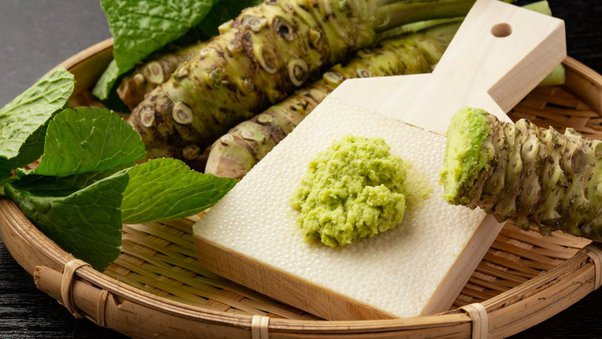
Wasabi 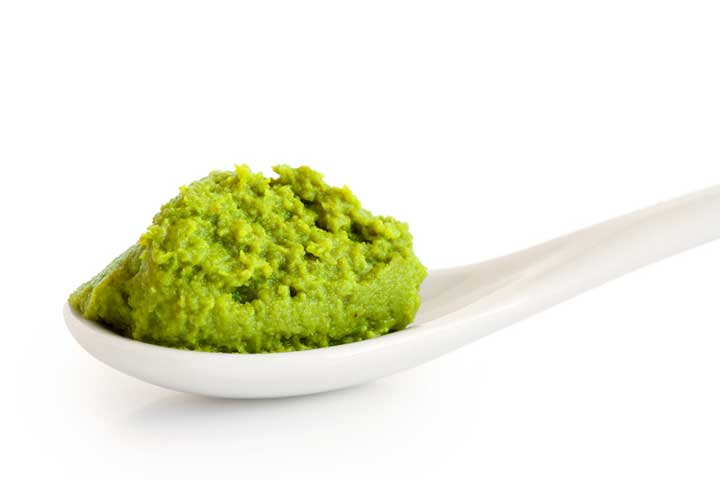
Wasabi -
Pickles are foods that are preserved in a low pH solution, according to most definitions. This indicates that they are most likely sour in flavor. Because there are several different ways to make things sour, this may cause uncertainty about what pickles are. Taking the product you want to preserve and placing it in a vinegar solution is one of the simplest ways to make pickles. Pickling vinegar, for example, has a pH of roughly 2.4, as everyone knows.
Yes, pickles are high in vitamin K, with 109 percent of the daily value per cup. There are, however, certain drawbacks. To begin, these measurements are for sweet pickles, such as the bread and butter variety that you may see on a sandwich. Sugar content is very high – 45 grams per serving! And one cup of pickles is a lot of pickles. One sweet pickle (much easier to eat) provides 22 percent of the daily value for vitamin K.
Pickles, like most vegetables, are almost entirely made up of water and contain very little fat or protein. Because the salty brine sucks the water out of the pickles, they have a high vitamin concentration. Depending on the type, they have different nutritional values. A whole dill pickle, for example, contains about 20% of the daily recommended amount of vitamin K, which helps your blood clot and keeps your bones strong, or 6% of the calcium adults require for strong bones and teeth and healthy nerves, or 6% of your daily potassium requirement, which keeps your nerves working properly...
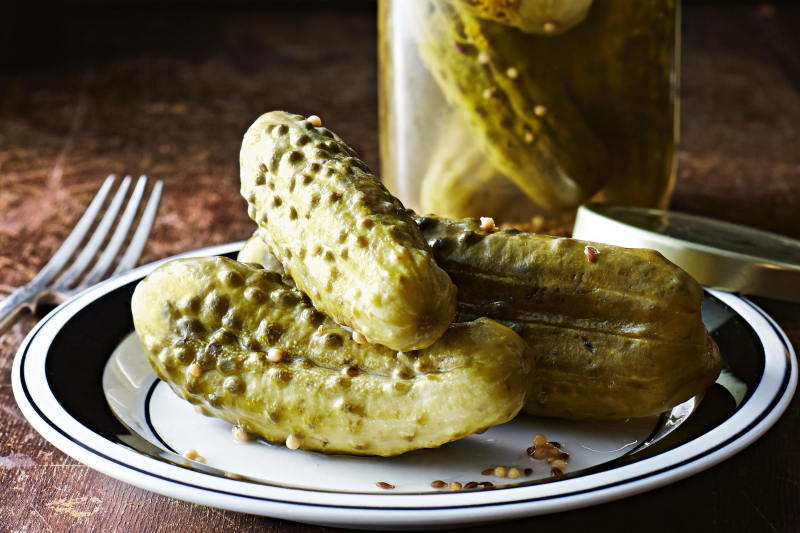
Pickles 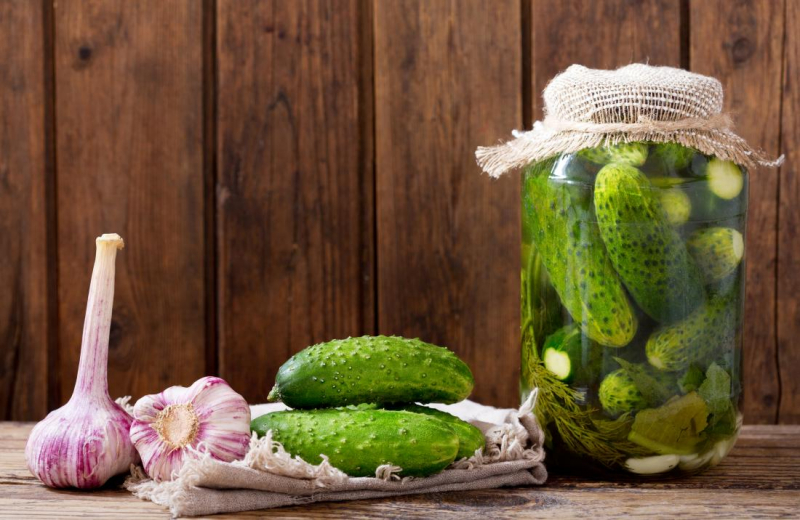
Pickles -
Kiwi, commonly known as kiwifruit or Chinese gooseberry, is a woody vine and edible fruit in the Actinidiaceae family. The plant is native to mainland China and Taiwan, as well as New Zealand and California, where it is commercially grown. The fruit has a little acidic flavor and can be eaten raw or cooked. The juice can also be utilized to tenderize meat.
Kiwi also contains large amounts of folate and zinc. They contain phytonutrients, like lutein, which are important for eye health and may help protect cells from damage. Finally, kiwifruit is a very good source of vitamin K, and a good source of potassium, and copper. This little, sweet New Zealand fruit is high in vitamin K, with 60 percent of the daily value (DV) and over 200 percent of the DV for vitamin C per cup. Simply split the tart fruit in half and scoop the meat right out of the peel with your spoon to enjoy.
The kiwifruit helps lower the risk of stroke and heart disease by helping to maintain healthy blood pressure and offering a boost of Vitamin C. Aside from that, kiwi fruit is abundant in nutritional fiber. Fiber can lower LDL or bad cholesterol, and so lessen heart disease risk factors.
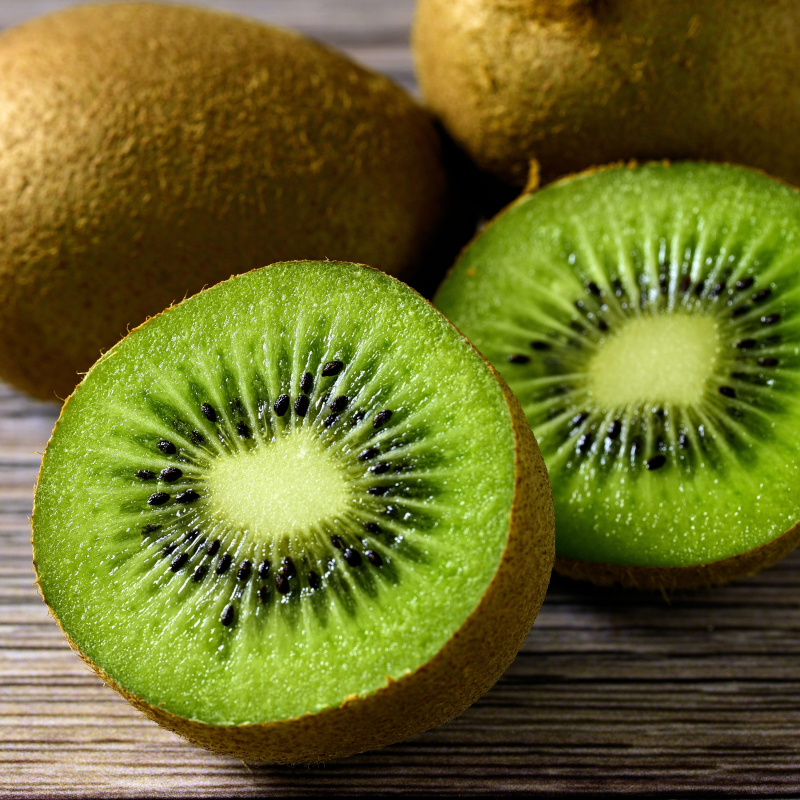
Kiwi 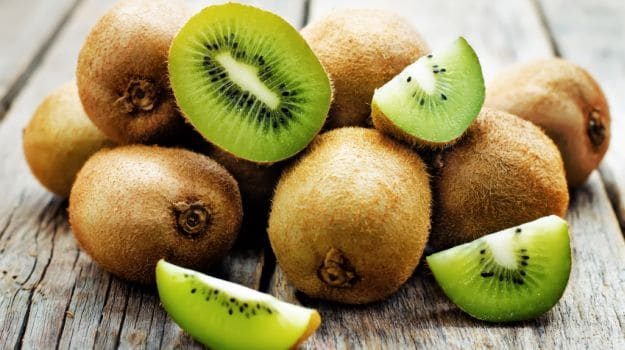
Kiwi












